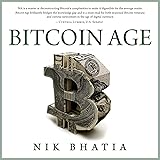Have you ever found yourself scratching your head, hearing snippets about Bitcoin, Ethereum, or the “blockchain,” only to feel a wave of confusion wash over you? Perhaps you’ve dismissed it all as a fleeting fad, a tech-bro pipe dream, or even a sophisticated scam. You’re not alone. Many people, despite years of headlines and skyrocketing valuations, still struggle to grasp the fundamental concepts of this new digital frontier. That’s precisely why this guide, complementing the video above, aims to unpack the world of cryptocurrency for dummies, making complex ideas simple and accessible.
My own journey into understanding digital assets began with similar skepticism. The language seemed impenetrable, the claims hyperbolic. But as the financial world continued to evolve, it became clear that ignoring this space was no longer an option. The video offers a fantastic starting point, cutting through the jargon to reveal the essence of what crypto is and where it came from. Here, we’ll build upon that foundation, delving deeper into the mechanics, the market, and the transformative potential that often gets lost amidst the noise.
The Genesis Story: Why Bitcoin Emerged After 2008
To truly understand cryptocurrency for dummies, we must rewind to a pivotal moment in recent history: the 2008 global financial crisis. Banks, trusted pillars of the economy, were exposed for risky practices, leading to a profound loss of public trust. Millions lost homes, jobs, and savings, while the institutions responsible often faced minimal repercussions.
It was in this climate of disillusionment that a mysterious entity known as Satoshi Nakamoto (likely a group of individuals) published the whitepaper for Bitcoin. The core idea was revolutionary in its simplicity: create a digital cash system that allowed two parties to transact directly, without needing a bank or any other third party. This vision was a direct response to the perceived failures of centralized financial systems. Instead of trusting a single institution, the trust would be distributed across a network, secured by cryptography – hence, “cryptocurrency.”
Bitcoin, launched in 2009, was the very first successful implementation of this idea. It proposed a system where every transaction is recorded on a public ledger, visible to all, and secured in a way that makes it impossible to alter after the fact. This fundamental shift from centralized control to decentralized consensus is what truly defines the spirit of early crypto. It was about empowering individuals with financial autonomy, moving away from reliance on institutions that had proven fallible.
Blockchain Unveiled: The Foundation of Digital Trust
At the heart of Bitcoin, and indeed almost all cryptocurrencies, lies a groundbreaking innovation called blockchain technology. While the video aptly describes it as “blocks of information…linked together with a digital chain,” let’s explore what that truly means and why it’s so powerful. Imagine a digital ledger, not unlike an Excel spreadsheet, where every entry – every transaction, every piece of data – is grouped into a “block.” Once a block is filled with validated information, it’s sealed with a unique cryptographic code, and then linked to the previous block, forming an unbroken “chain.”
The critical innovation here is immutability. Once a record is on the blockchain, it cannot be changed or deleted. This is enforced by cryptography and the decentralized nature of the network. Thousands of computers (nodes) around the world hold identical copies of this ledger. For any change to occur, a majority of these nodes would have to agree, which is practically impossible for malicious actors to achieve. This distributed, tamper-proof record-keeping system allows for a new form of digital trust – trust in the system itself, rather than in a human intermediary.
More Than Money: How Blockchain Reshapes Industries
While Bitcoin’s initial purpose was “digital cash,” the underlying blockchain technology quickly revealed its potential for applications far beyond currency. As the speaker in the video points out, thinking of Bitcoin as “the Internet” itself is a common misconception; Bitcoin is merely one application built on the blockchain, much like Facebook or Amazon are applications built on the internet.
Consider the real-world examples mentioned:
- Automated Insurance Claims: AXA, a major insurance company, created “Fizzy,” a flight insurance product built on blockchain. If your flight is delayed by three hours or more, the system automatically detects this and processes your compensation instantaneously. No phone calls, no forms, no haggling. This cuts down administrative costs for the company and removes the frustration for the customer. It’s a testament to how smart contracts (self-executing agreements coded onto the blockchain) can streamline processes.
- Supply Chain & Logistics: The idea of paying for a parcel only when it physically arrives at your door is revolutionary. Blockchain can track goods with unprecedented transparency, from origin to destination. Imagine knowing exactly where your organic coffee beans came from, or verifying the authenticity of luxury goods to combat counterfeiting. Every step of the supply chain could be recorded, offering immutable proof of provenance and handling.
- Healthcare Records: Medical information, if stored on a blockchain, could provide a secure, tamper-proof, and universally accessible patient history. This means faster, more accurate diagnoses, better coordinated care across different providers, and ultimately, improved patient outcomes. Patients could also have greater control over who accesses their data.
- Voting Systems: Blockchain could introduce unparalleled transparency and security to elections, reducing the potential for fraud and increasing public confidence in results.
These examples illustrate that blockchain is not just about digital money; it’s about a new paradigm for secure, transparent, and efficient data management across virtually every industry.
Navigating the Crypto Landscape: Altcoins, ICOs, and Smart Investments
Once you grasp Bitcoin and blockchain, the conversation invariably turns to the thousands of other cryptocurrencies. These are generally referred to as “altcoins” – simply, alternative coins to Bitcoin.
Altcoins vs. Bitcoin: Understanding the Alternatives
Technically, any cryptocurrency that isn’t Bitcoin is an altcoin. This includes major players like Ethereum (which, as one speaker notes, is a popular investment choice) and lesser-known tokens. While Bitcoin was designed primarily as a store of value and a peer-to-peer electronic cash system, many altcoins have different purposes. Ethereum, for instance, introduced smart contract functionality, allowing developers to build decentralized applications (dApps) directly on its blockchain. Other altcoins might focus on privacy, faster transactions, specific industry applications (like Medic Chain for healthcare), or even gaming.
The ICO Craze and “Shitcoins”: Lessons from 2017
The term “shitcoin” often arises from a period in 2017 when the crypto market experienced a massive boom. This era saw the rise of Initial Coin Offerings (ICOs), a new fundraising method unique to the crypto space. Instead of an Initial Public Offering (IPO) where companies sell shares, ICOs involved startups issuing their own digital tokens to raise capital. Many projects promised groundbreaking technology and sky-high returns, akin to being “the next Bitcoin.”
The problem was a severe lack of regulation. Many ICOs were based on little more than a whitepaper and marketing hype. People invested millions in projects with unproven technology and inexperienced teams, often purely based on speculation. The video highlights a stark statistic: “over 95% of people lost money if they’d have held for a certain period of time” from these speculative ICOs. This period unfortunately gave rise to many “shitcoins” – projects that failed to deliver, were outright scams, or simply lacked any real-world utility.
The lesson learned from the ICO craze is crucial: not all digital assets are created equal. Due diligence is paramount. As the speaker advises, ask the same questions you would for any traditional investment: What problem does this project solve? Is the technology sound? Who is the team behind it? What is their track record? Is there a viable business model?
Investing Wisely: Applying Traditional Principles to Crypto
For those considering investing, whether in Bitcoin or altcoins, the advice is clear: apply the same logic as you would to stocks and shares. Crypto markets are volatile, and significant capital can be lost. Here are some principles to consider:
- Research is Key: Understand what you’re investing in. Don’t chase hype or rely solely on recommendations from friends.
- Diversification: Don’t put all your eggs in one basket.
- Long-Term Vision: The industry is still nascent. While “get rich quick” stories exist, a more pragmatic approach involves understanding the underlying technology’s potential for long-term growth. The yearly lows of Bitcoin have consistently increased over its ten-year history, indicating a long-term upward trend despite dramatic price swings.
- Risk Management: Only invest what you can afford to lose.
Practicalities of Crypto: Buying, Spending, and the Market Pulse
The perception of crypto often includes questions of practicality: How do I get it? Can I actually spend it? And what drives its value?
Acquiring and Utilizing Cryptocurrency in the Real World
Gone are the days when buying Bitcoin was a convoluted process. Today, numerous exchanges and platforms in the UK (and globally) make it “exceptionally easy” to convert fiat currency (like GBP or USD) into Bitcoin or other cryptocurrencies. These platforms often resemble online banking interfaces, providing a user-friendly experience.
Spending crypto has also become significantly easier. While not every corner shop accepts Bitcoin directly, a growing number of major companies do – from Whole Foods to Lamborghini dealerships. Even if a specific vendor doesn’t, the emergence of Bitcoin debit cards (like Visa-backed options) allows users to top up their card with crypto, which is then converted to local currency at the point of sale. This bridges the gap between the digital and traditional financial worlds, making it possible to buy drinks at the pub or pay for groceries using your digital assets.
Understanding Crypto Market Cycles: Bulls, Bears, and Bitcoin’s Influence
The video touches on “bull runs” and “bear markets,” essential concepts for understanding crypto market dynamics:
- Bull Market/Run: Characterized by rising prices, investor optimism, and increased buying activity. The famous late 2017 period, where Bitcoin surged from $1,000 to nearly $20,000, was a classic bull run.
- Bear Market: Characterized by falling prices, investor pessimism, and increased selling activity. The entire year of 2018, following the 2017 peak, was largely a bear market for cryptocurrencies.
Bitcoin’s role in the crypto ecosystem is often compared to the oil market’s influence on the US dollar. Essentially, Bitcoin acts as the benchmark. If Bitcoin’s price moves significantly, altcoins typically follow. A 10% jump in Bitcoin might lead to even larger percentage gains in smaller altcoins due to their lower market capitalization, but the reverse is also true in a downturn. There’s often a “lag time” for altcoins to catch up, as investors wait to see if Bitcoin’s price change is sustainable before shifting capital.
The Future is Decentralized: Mainstream Adoption and Evolving Systems
One of the most exciting aspects of cryptocurrency for dummies is understanding its long-term potential. While early adopters embraced Bitcoin for its anti-establishment ethos, the inherent advantages of blockchain technology have begun to attract the very institutions it sought to disrupt.
From Banks to Big Tech: Corporate Embrace of Blockchain
The landscape is rapidly changing. We’re seeing major corporations and financial institutions exploring or implementing blockchain-based solutions:
- JP Morgan Coin: This is not a publicly tradable cryptocurrency but an internal system developed by JP Morgan to settle international funds more efficiently between its various accounts. It leverages blockchain for speed and cost-effectiveness, demonstrating that even traditional banks see value in the technology.
- Facebook’s Libra (now Diem): Facebook’s ambitious plan for a global digital currency, initially called Libra and later rebranded to Diem, aims to create a stablecoin that could be used across its vast ecosystem (Facebook, Instagram, WhatsApp) and by partner companies like Uber. While it faced significant regulatory hurdles, it signals Big Tech’s recognition of the power of digital money and the potential for new financial products (like highly personalized insurance, as the speaker notes, given Facebook’s data on users). Such initiatives, even if centrally controlled, introduce millions to the concept of digital currencies, ultimately paving the way for broader understanding and adoption of decentralized cryptocurrencies.
These developments show a significant shift. What began as a rebellious experiment is now being integrated into the global financial and technological infrastructure. Regulatory clarity, custodial services, and clear tax laws are gradually emerging, making the crypto space more mature and accessible for a wider audience.
Is It Too Late to Invest in Cryptocurrency?
A frequent concern, especially for those who heard about Bitcoin’s explosive growth and subsequent dips, is whether they’ve “missed the boat.” The consensus from experts, including the speaker in the video, is a resounding “categorically not.” While the days of Bitcoin going from mere cents to thousands might be over, the technology itself is still in its infancy. We are witnessing the very early stages of a technological revolution that promises to “completely modernize the way that we do business.”
The “Google’s and Microsofts” of the crypto space are still being built, or are yet to achieve their full prominence. Investing in cryptocurrency for dummies now is less about hoping for another 2017-style parabolic surge (though these can still occur in altcoins with smaller market caps) and more about believing in the fundamental shift that blockchain technology represents. It’s about participating in a future where transactions are more transparent, data is more secure, and intermediaries are reduced or removed, fostering a more efficient and equitable digital economy.







